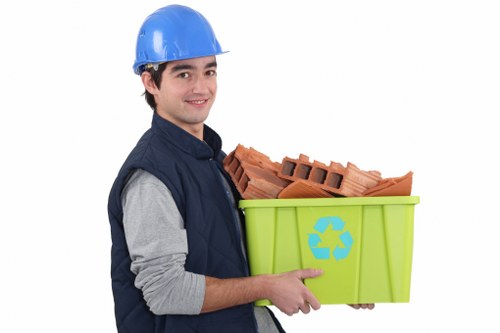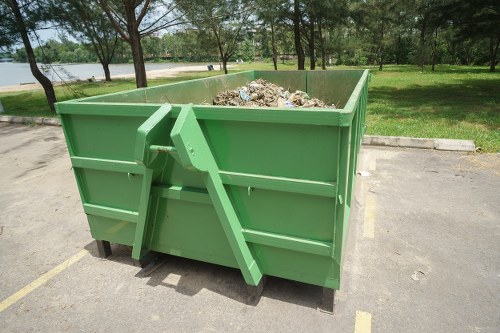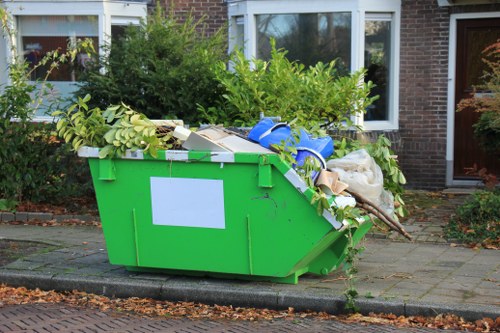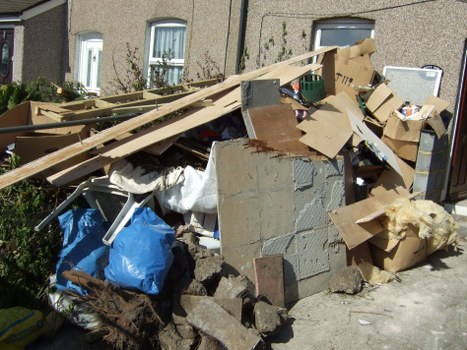Construction Waste Disposal in Victoria: A Comprehensive Guide

Construction waste disposal is a critical aspect of the building industry in Victoria. As urban development continues to surge, managing the by-products of construction activities becomes increasingly important. Proper disposal not only ensures environmental compliance but also promotes sustainability within the sector.
In Victoria, strict regulations govern how construction waste should be handled. Failure to adhere to these guidelines can result in hefty fines and legal repercussions. Therefore, it is essential for construction companies and contractors to understand the best practices for waste management.
Effective waste disposal strategies can lead to significant cost savings, enhance the company's reputation, and minimize the environmental footprint. This guide delves into the various aspects of construction waste disposal in Victoria, offering insights and practical tips for industry professionals.

Understanding Construction Waste
Construction waste encompasses a wide range of materials discarded during building projects. This can include:
- Concrete and bricks
- Wood and plywood
- Metals such as steel and aluminum
- Plastics and polymers
- Glass and ceramics
- Cables and wiring
Each type of waste material requires specific disposal methods to ensure safety and compliance with environmental standards. Proper categorization and sorting are the first steps towards effective waste management.
Moreover, understanding the composition of construction waste helps in identifying recyclable or reusable materials, thereby reducing the overall volume destined for landfills.

Types of Construction Waste
Construction waste can be broadly classified into several categories based on its source and material composition:
- Demolition Waste: Resulting from the dismantling of existing structures.
- Renovation Waste: Generated during the renovation or remodeling of buildings.
- New Construction Waste: Produced during the construction of new buildings.
- Packaging Waste: Arising from the materials used to package construction products.
Identifying the type of construction waste is crucial for determining the appropriate disposal or recycling method, ensuring compliance with Victorian regulations.

Importance of Proper Waste Disposal
Proper disposal of construction waste is vital for several reasons:
- Environmental Protection: Prevents pollution and reduces the strain on natural resources.
- Regulatory Compliance: Adheres to laws and avoids legal penalties.
- Economic Efficiency: Reduces costs associated with waste management and disposal fees.
- Reputation Management: Enhances the company’s image as a responsible and sustainable entity.
Failing to manage construction waste properly can lead to environmental degradation, financial losses, and damaged reputation, making it imperative for businesses to adopt effective waste disposal practices.
Additionally, sustainable waste management contributes to the broader goals of reducing carbon footprints and promoting green building practices in Victoria.

Environmental Impacts
Improper disposal of construction waste can have severe environmental consequences. Landfills filled with construction debris can lead to soil contamination and water pollution. Hazardous materials, such as asbestos and lead-based paints, pose significant risks to both human health and the ecosystem.
Moreover, excessive waste generation contributes to the depletion of natural resources. By implementing effective waste disposal and recycling practices, the construction industry can mitigate these negative impacts and promote environmental sustainability.
Regulations and Guidelines in Victoria
Victoria has established comprehensive regulations to manage construction waste effectively. The Environment Protection Authority (EPA) Victoria oversees the enforcement of these rules, ensuring that construction companies comply with waste management standards.
Key regulations include:
- Waste Reduction Act: Mandates the reduction, reuse, and recycling of waste materials.
- Building and Construction Industry Waste Management Guidelines: Provides specific instructions on handling different types of construction waste.
- Hazardous Waste Regulations: Outlines the protocols for managing and disposing of hazardous materials safely.
Compliance with these regulations not only avoids legal issues but also promotes a culture of sustainability within the construction industry in Victoria.
Victorian Waste Management Policies
Victorian policies emphasize the importance of waste minimization and resource recovery. The state encourages construction businesses to adopt practices that reduce waste generation and enhance recycling efforts. Initiatives such as the Circular Economy Act aim to promote the reutilization of materials, thereby conserving resources and minimizing environmental impact.
Additionally, the policies support innovation in waste management technologies, enabling the construction sector to adopt more efficient and environmentally friendly disposal methods.
Methods of Construction Waste Disposal
There are several methods available for disposing of construction waste in Victoria, each with its own set of benefits and considerations:
- Recycling and Reuse: Involves processing waste materials to create new products, thereby extending their lifecycle.
- Landfilling: Entails disposing of waste in designated landfill sites, subject to environmental regulations.
- Incineration: Involves burning waste materials at high temperatures to reduce volume and potentially generate energy.
Choosing the right disposal method depends on the type of waste, regulatory requirements, and the company's sustainability goals.
Recycling and reuse are often preferred due to their environmental benefits and potential cost savings, but they require proper sorting and processing facilities.
Recycling and Reuse
Recycling construction waste involves collecting, processing, and repurposing materials such as concrete, wood, metals, and plastics. For instance, crushed concrete can be reused as aggregate for new construction projects, reducing the need for virgin materials.
Reusing materials, on the other hand, focuses on extending the life of products by finding new applications for them. Salvaged wood can be repurposed for flooring or furniture, while metal scraps can be melted down and reformed into new products.
Implementing recycling and reuse practices not only conserves natural resources but also reduces the overall cost of waste management by minimizing the volume of waste sent to landfills.
Landfilling
Landfilling is a common method for disposing of construction waste, especially for materials that cannot be recycled or reused. Victoria has several regulated landfill sites designed to handle different types of construction debris.
While landfilling provides a straightforward disposal solution, it has environmental drawbacks, including the potential for soil and water contamination. Therefore, it is essential to minimize the amount of waste sent to landfills by exploring alternative disposal methods where feasible.
Landfill operators must comply with strict environmental standards to ensure that the waste is safely contained and does not pose a risk to the surrounding ecosystem.
Incineration
Incineration involves burning construction waste at high temperatures, reducing its volume significantly. This method is efficient for managing combustible materials like wood, plastics, and certain metals.
In Victoria, incineration facilities are equipped with advanced technologies to minimize emissions and capture pollutants, ensuring that the process adheres to environmental regulations.
Additionally, some incineration plants can harness the energy generated from burning waste, contributing to the state's energy supply and promoting the circular economy.
Costs Associated with Waste Disposal
The costs of construction waste disposal vary depending on the method chosen and the type of waste being managed. Factors that influence disposal costs include transportation fees, landfill charges, recycling processing fees, and any additional costs for handling hazardous materials.
Recycling and reuse often present cost-saving opportunities, as they reduce the volume of waste requiring disposal. Moreover, some recycling programs may offer incentives or rebates for properly managing and repurposing materials.
However, initial setup costs for recycling infrastructure can be high, and companies must weigh these against the long-term benefits of sustainable waste management practices.
Choosing the Right Waste Disposal Service
Selecting an appropriate waste disposal service is crucial for ensuring compliance and optimizing waste management processes. When choosing a disposal service in Victoria, consider the following factors:
- Licensing and Certification: Ensure the service provider is licensed and adheres to Victorian waste management regulations.
- Service Range: Look for companies that offer a comprehensive range of services, including recycling, landfilling, and hazardous waste management.
- Cost-Effectiveness: Compare pricing structures to find a service that fits your budget without compromising on quality.
- Reputation: Choose providers with positive reviews and a track record of reliability and professionalism.
- Environmental Commitment: Opt for companies that prioritize sustainability and incorporate eco-friendly practices in their operations.
By carefully evaluating potential waste disposal services, construction companies can ensure efficient and compliant waste management, fostering a sustainable business model.
Factors to Consider
In addition to the primary factors, consider the following when selecting a waste disposal service:
- Proximity: Choosing a local provider can reduce transportation costs and emissions.
- Flexibility: Ensure the service can handle varying volumes of waste and can accommodate your project’s timeline.
- Technology: Providers using advanced waste management technologies may offer more efficient and environmentally friendly solutions.
- Customer Support: Good customer service ensures any issues are promptly addressed, facilitating smooth operations.
Taking these additional factors into account can help in selecting a waste disposal service that not only meets your immediate needs but also aligns with your long-term sustainability goals.
Best Practices for Managing Construction Waste
Implementing best practices in construction waste management can lead to significant environmental and economic benefits. Here are some strategies to consider:
- Waste Segregation: Sort waste materials at the source to facilitate recycling and reduce contamination.
- Minimizing Waste Production: Optimize construction processes to limit the generation of excess waste.
- Regular Audits: Conduct periodic waste audits to identify areas for improvement and track progress.
- Training and Education: Educate employees about the importance of waste management and train them in best practices.
Adopting these best practices helps in creating a structured approach to waste management, ensuring that construction activities are both efficient and sustainable.
Furthermore, engaging stakeholders in waste management initiatives fosters a culture of responsibility and accountability, enhancing the overall effectiveness of disposal strategies.
Waste Segregation
Waste segregation involves separating different types of construction waste to streamline the disposal process. By categorizing waste into recyclables, non-recyclables, and hazardous materials, companies can efficiently manage each category according to its specific requirements.
Effective segregation reduces the risk of contamination, making recycling processes more efficient and cost-effective. It also ensures that hazardous materials are handled safely, preventing environmental pollution and health hazards.
Providing clear guidelines and designated areas for different waste types on construction sites can facilitate effective segregation and waste management.
Minimizing Waste Production
Reducing the amount of waste generated during construction can lead to substantial cost savings and environmental benefits. Strategies to minimize waste include:
- Accurate Planning: Detailed project planning can help in estimating material requirements more precisely, reducing excess orders.
- Efficient Design: Designing buildings with modular components can lead to more efficient use of materials.
- Material Selection: Choosing materials that are durable and have a lower environmental impact can minimize waste over the structure’s lifecycle.
- Recycling Leftovers: Utilize leftover materials in other parts of the project or in future projects to avoid waste.
By implementing these strategies, construction companies can significantly reduce their waste footprint, contributing to more sustainable building practices in Victoria.
Future of Construction Waste Disposal in Victoria
The landscape of construction waste disposal in Victoria is evolving, driven by advancements in technology and a growing emphasis on sustainability. Future trends are likely to focus on the following areas:
- Increased Recycling Efforts: Enhanced recycling technologies will make it easier to process and repurpose a wider range of construction materials.
- Waste-to-Energy Solutions: Utilizing waste incineration to generate energy will become more prevalent, contributing to Victoria’s energy needs.
- Smart Waste Management Systems: Integration of digital technologies for tracking and optimizing waste disposal processes.
- Regulatory Enhancements: Stricter environmental regulations will push the industry towards more sustainable practices.
These developments will not only improve the efficiency and effectiveness of waste disposal but also support Victoria’s commitment to environmental sustainability and resource conservation.
Moreover, the adoption of innovative waste management solutions will position Victoria as a leader in sustainable construction practices, setting benchmarks for other regions to follow.
Sustainable Practices
Sustainability is at the core of future waste management strategies in the construction industry. Embracing sustainable practices involves:
- Green Building Certifications: Achieving certifications like Green Star or LEED by implementing sustainable waste management practices.
- Circular Economy Models: Designing buildings and projects that prioritize the reuse and recycling of materials.
- Innovative Materials: Utilizing eco-friendly materials that generate less waste and are easier to recycle.
- Collaboration and Partnerships: Working with stakeholders, including suppliers and waste disposal services, to develop comprehensive sustainability plans.
These sustainable practices not only reduce the environmental impact of construction activities but also enhance the economic viability and social responsibility of construction businesses in Victoria.
Conclusion
Construction waste disposal in Victoria is a multifaceted issue that requires a strategic and informed approach. By understanding the types of waste, adhering to regulations, and adopting best practices, the construction industry can effectively manage waste, minimize environmental impact, and achieve economic benefits.
As Victoria continues to grow and develop, the importance of sustainable waste management practices will only increase. Embracing recycling, reuse, and innovative disposal methods will position the industry for long-term success and sustainability.
Contact us today to learn more about how we can help your construction projects adhere to Victoria’s waste disposal regulations and implement effective waste management strategies.